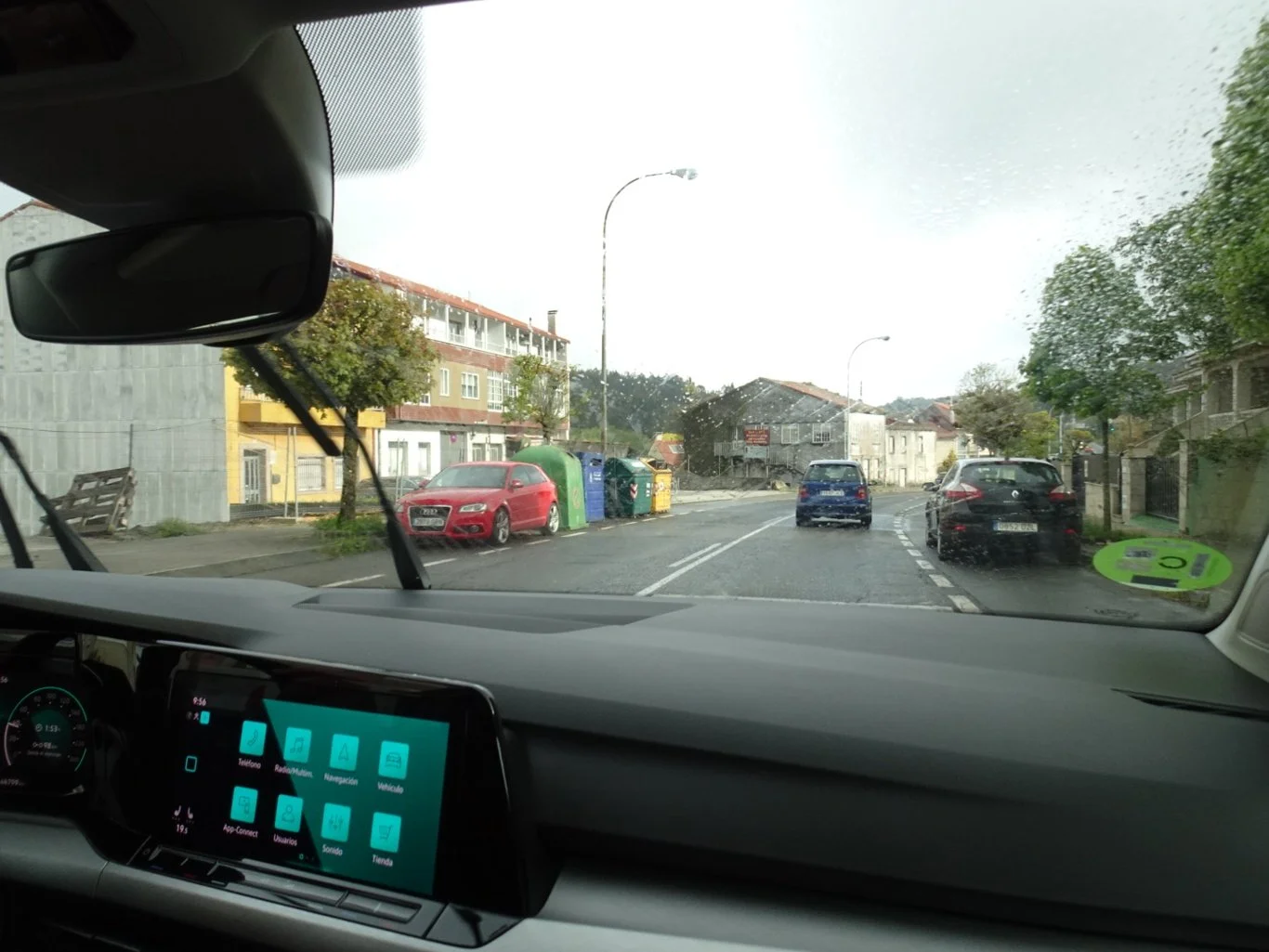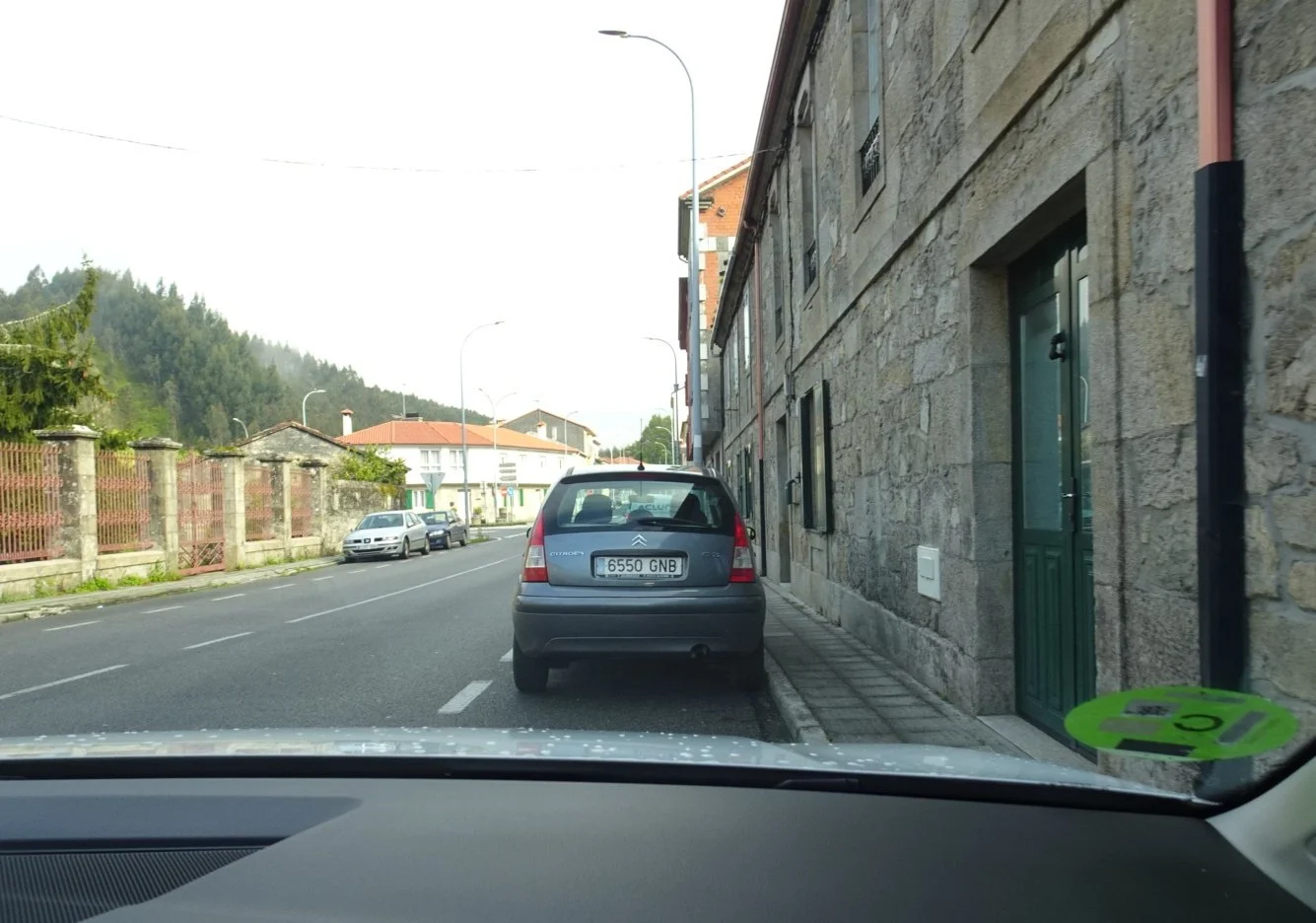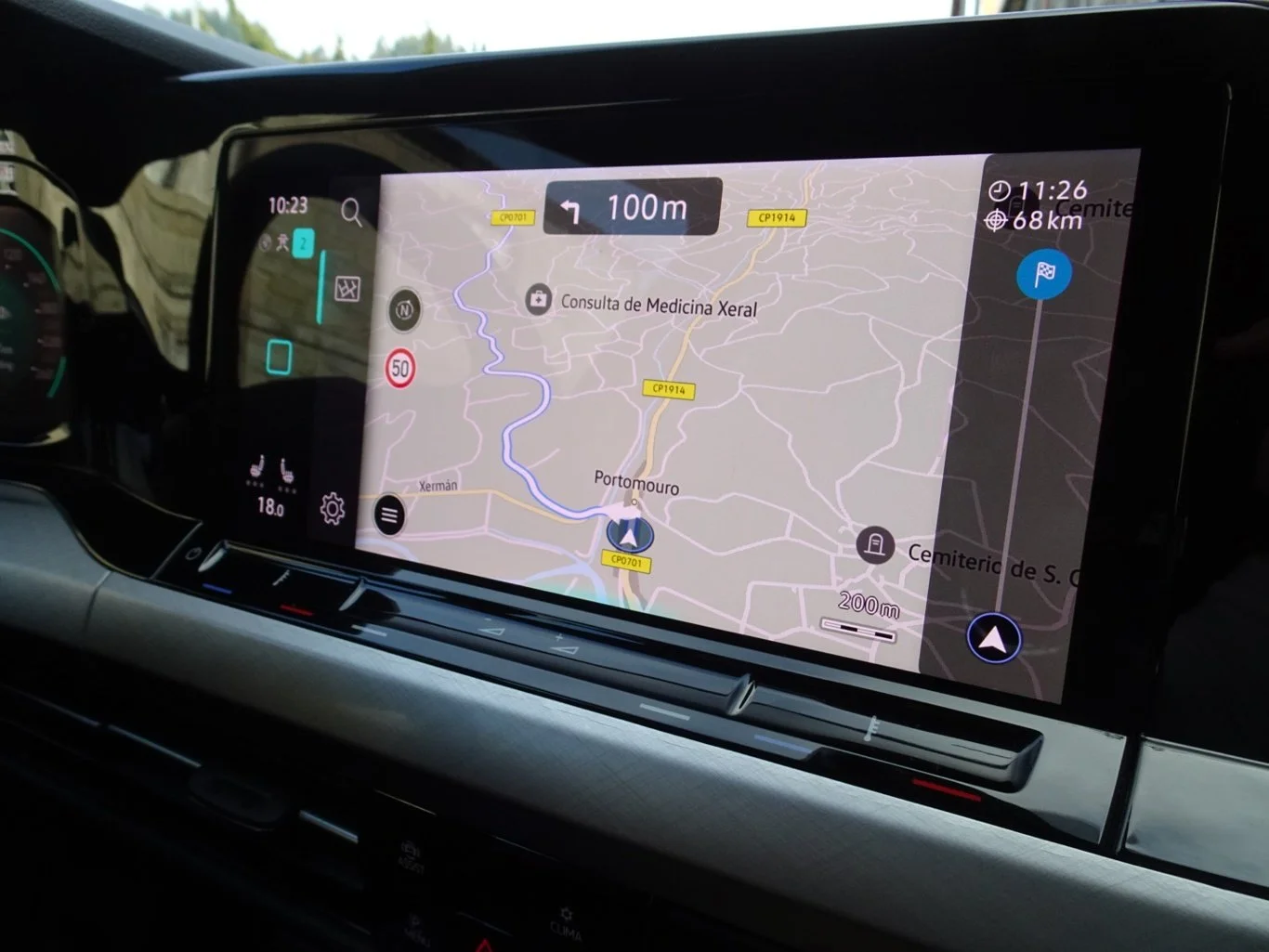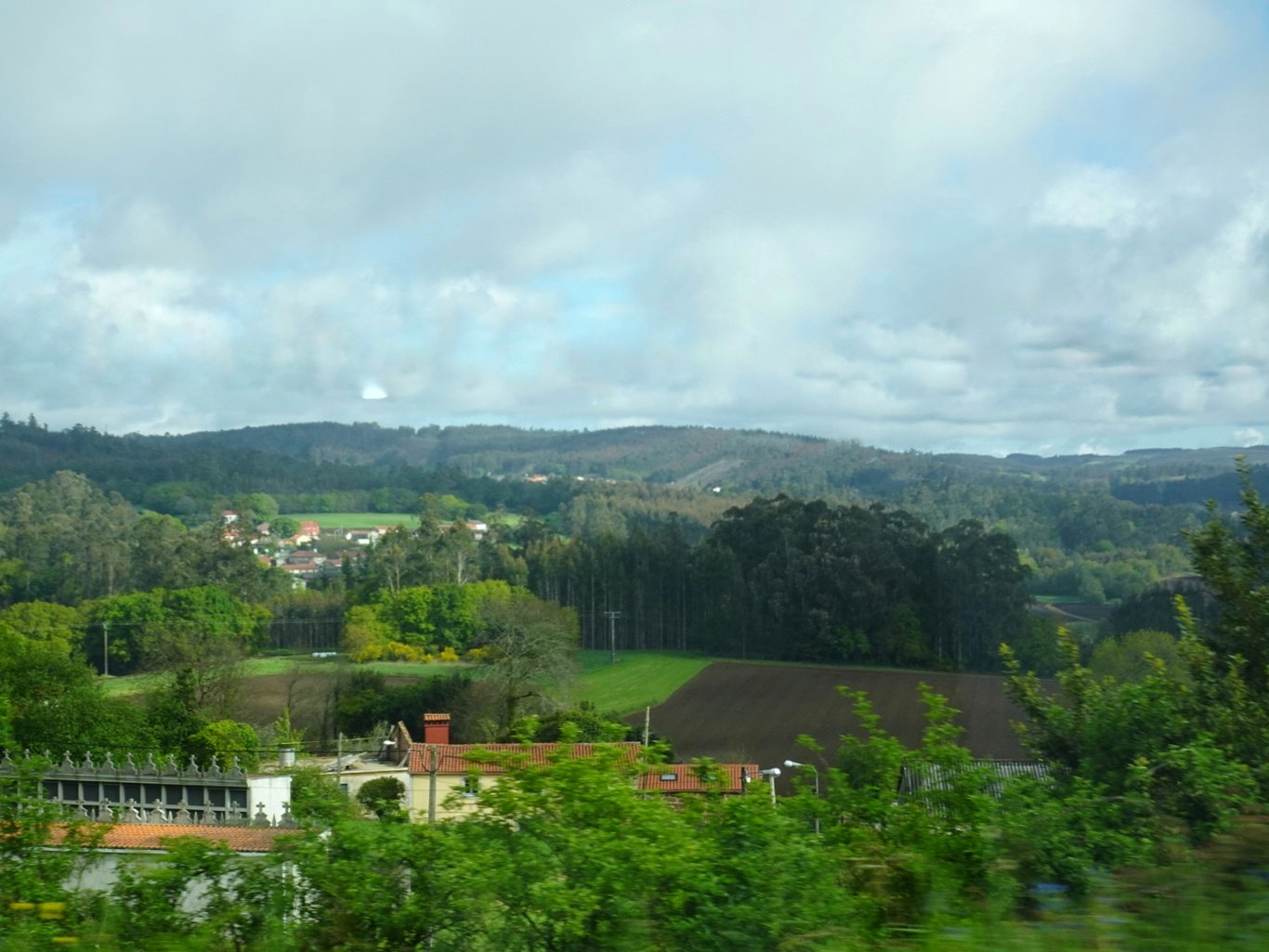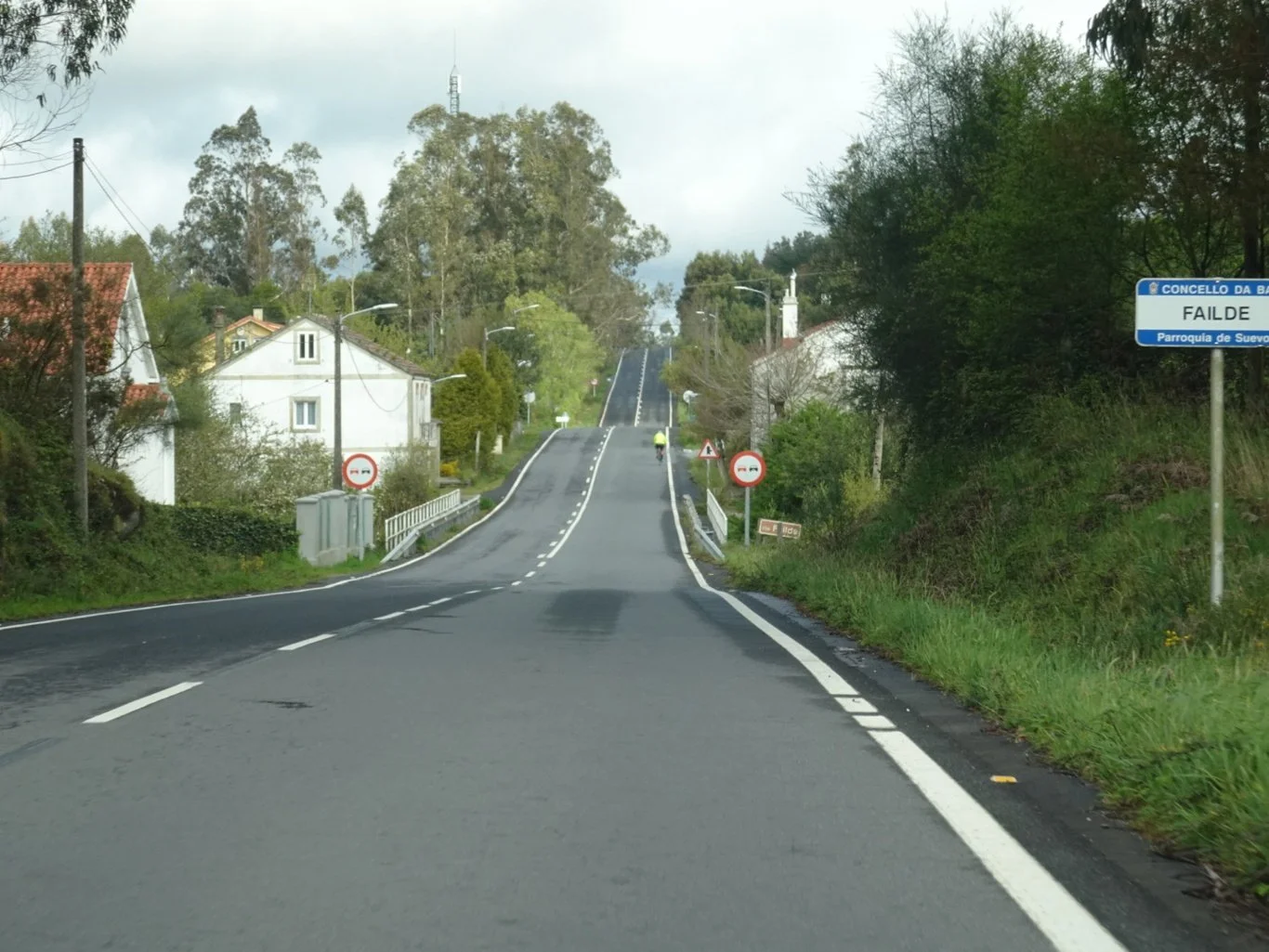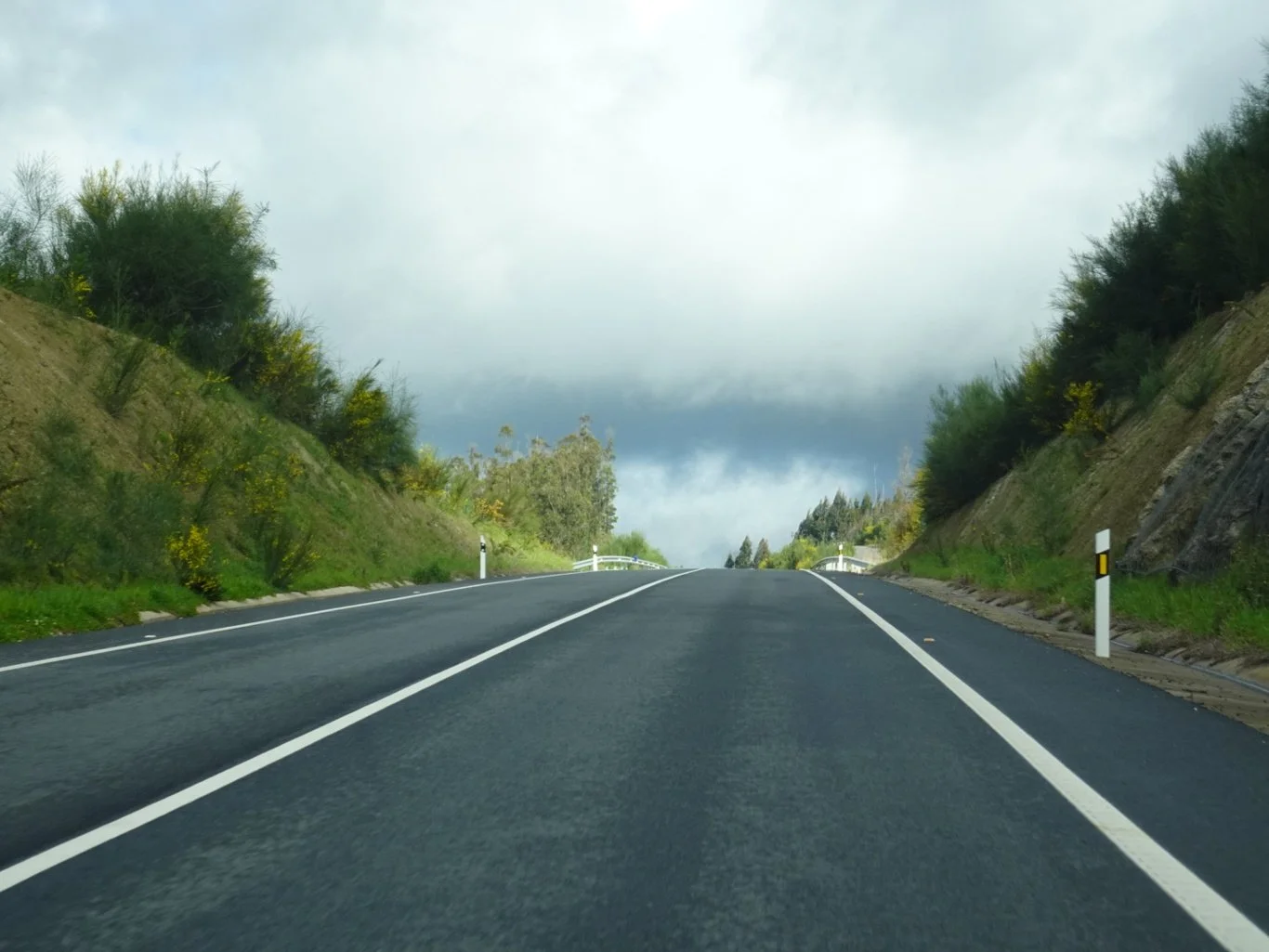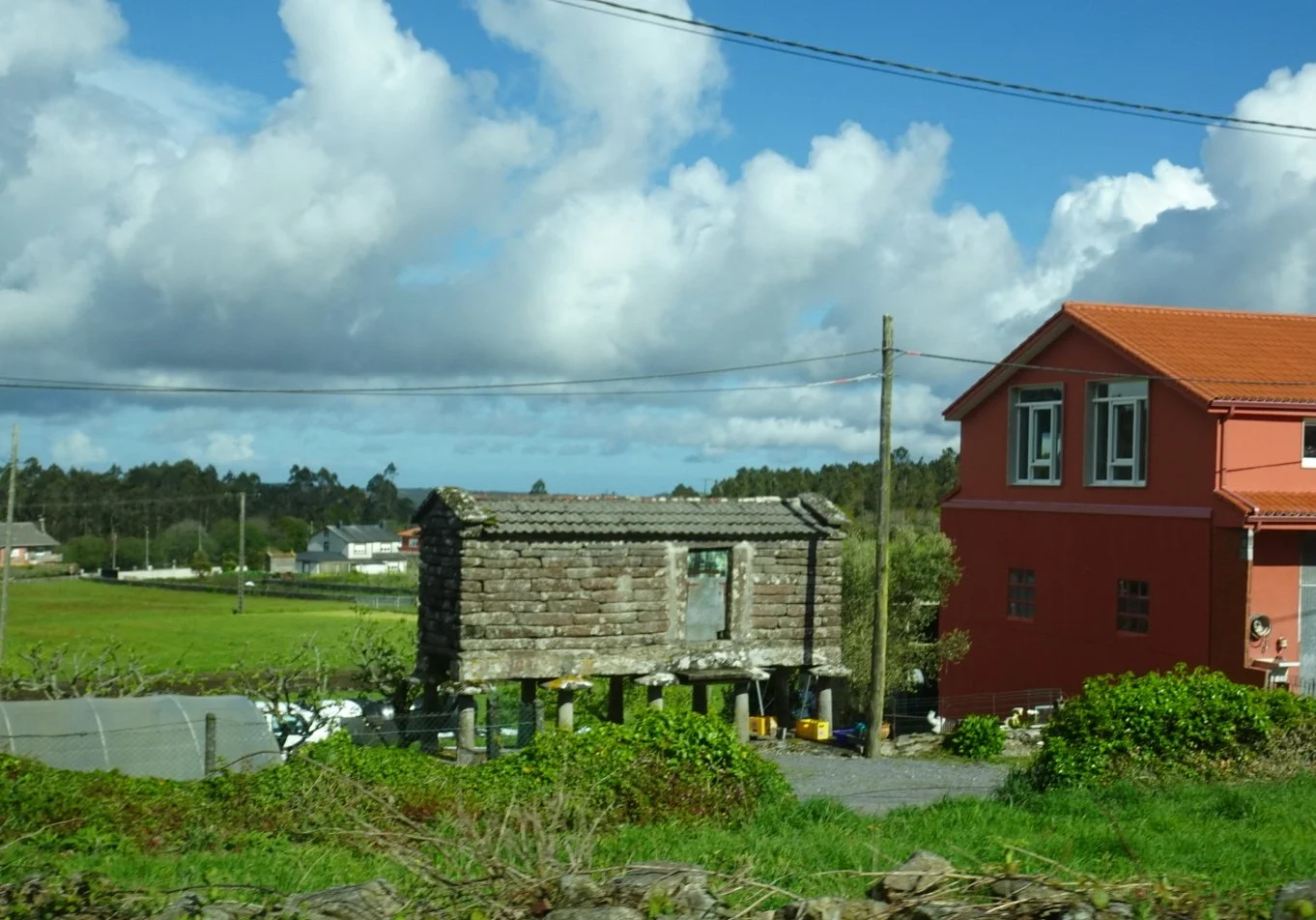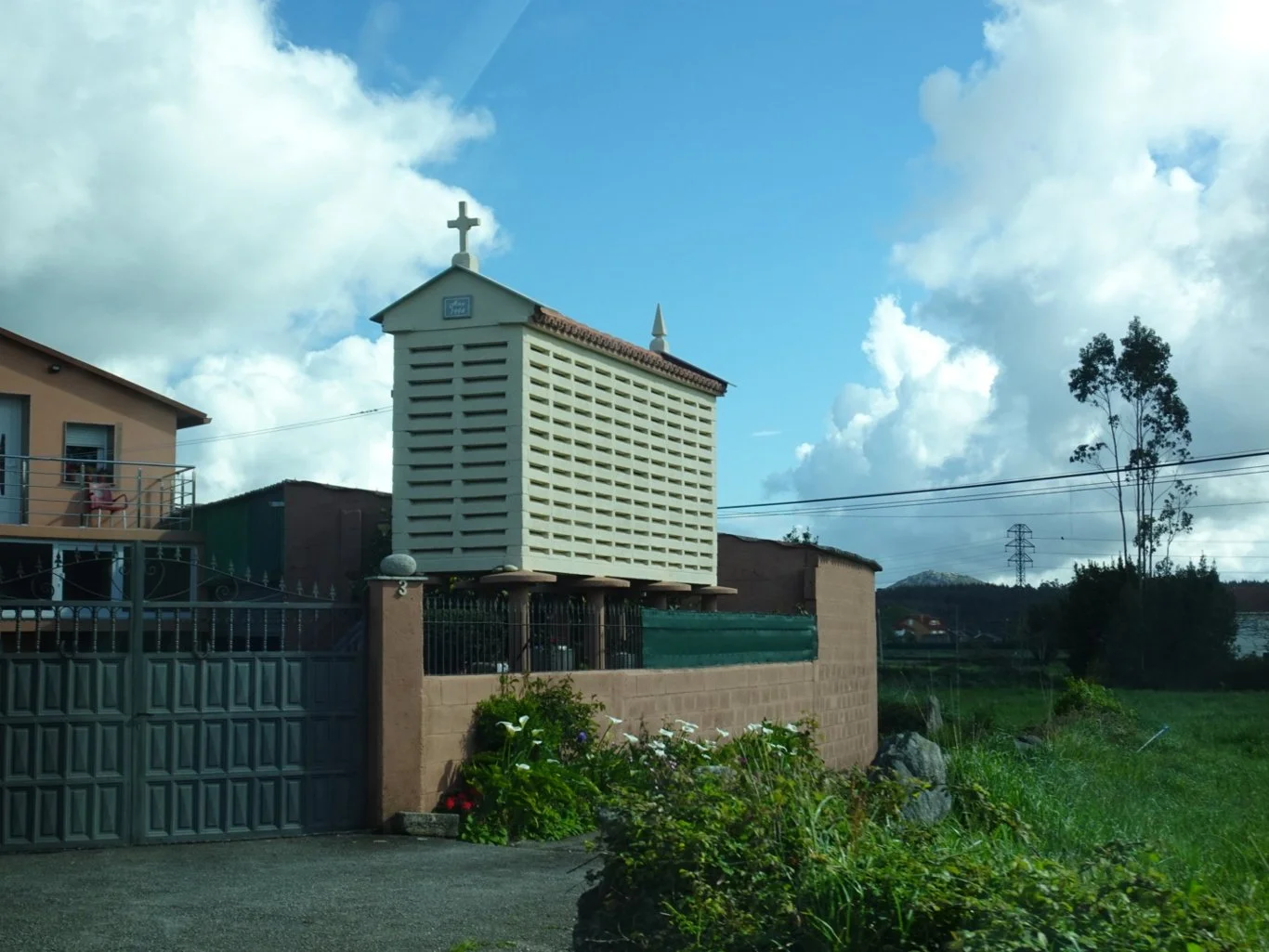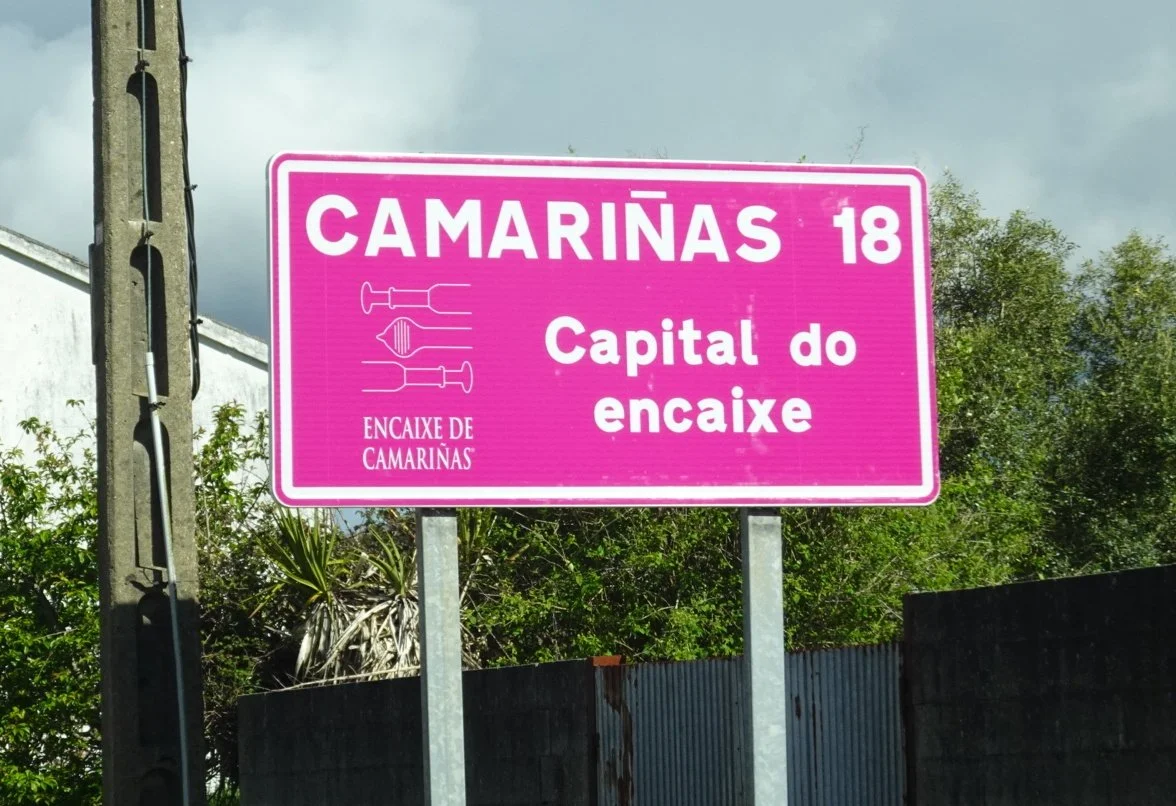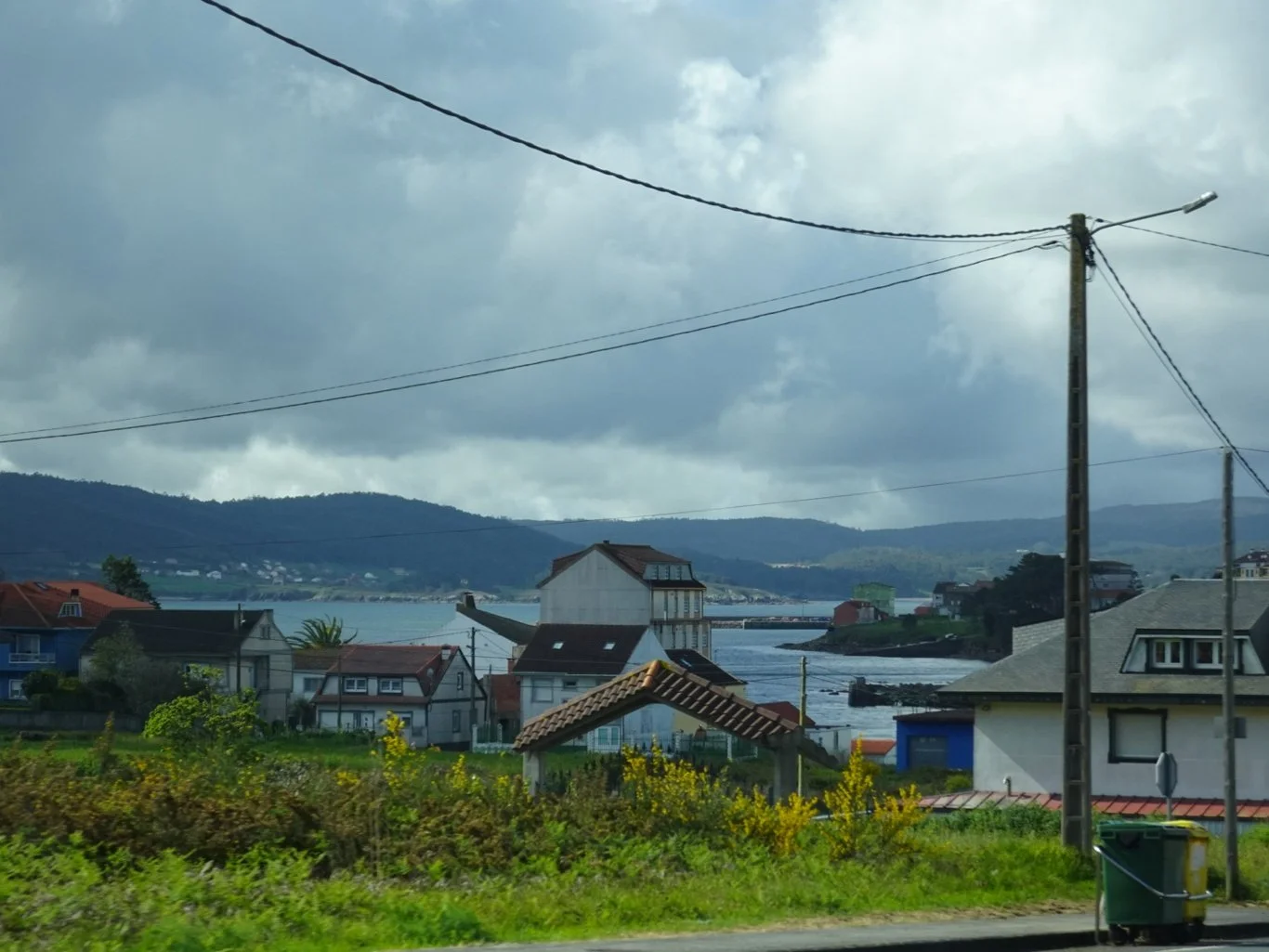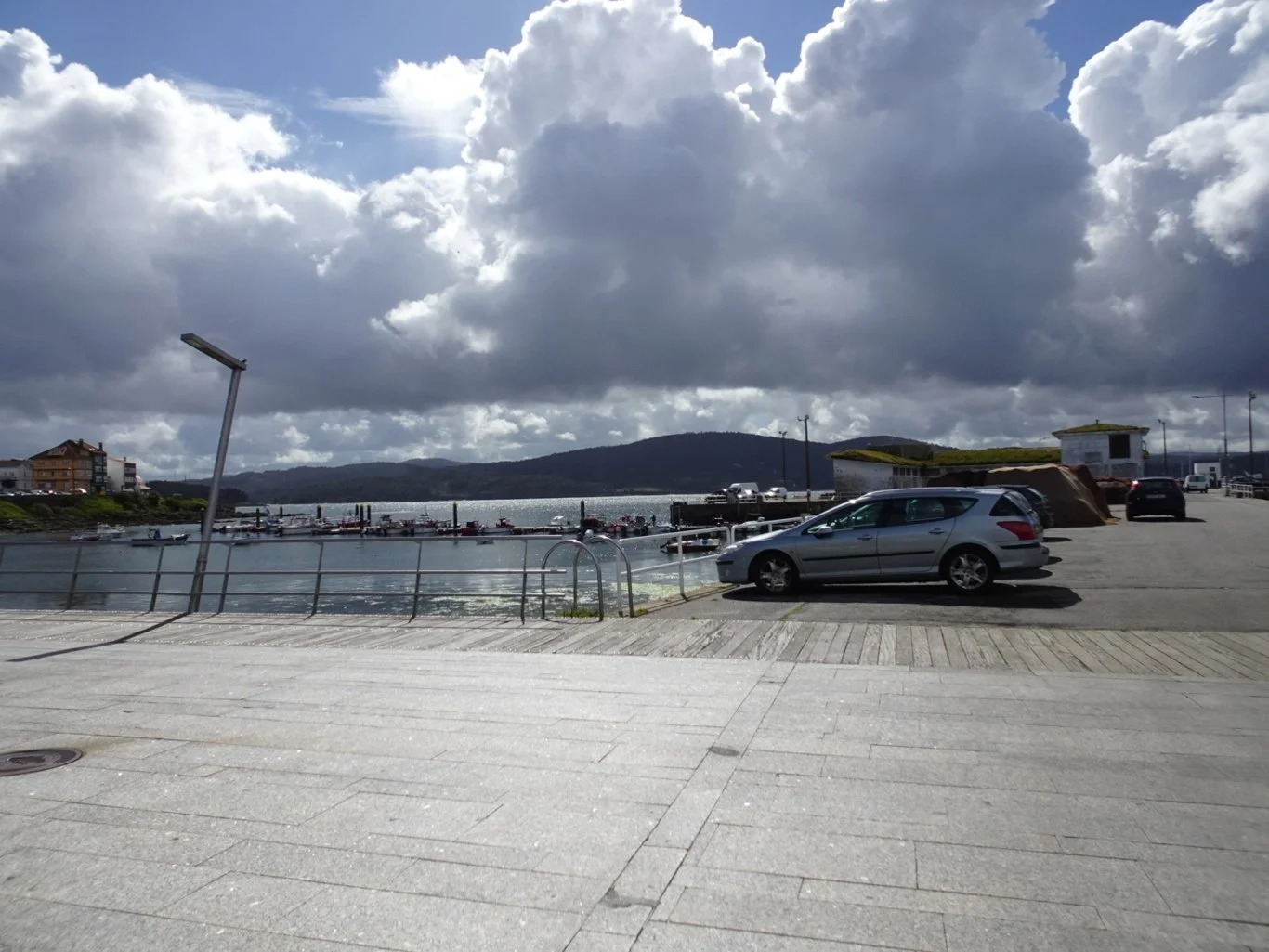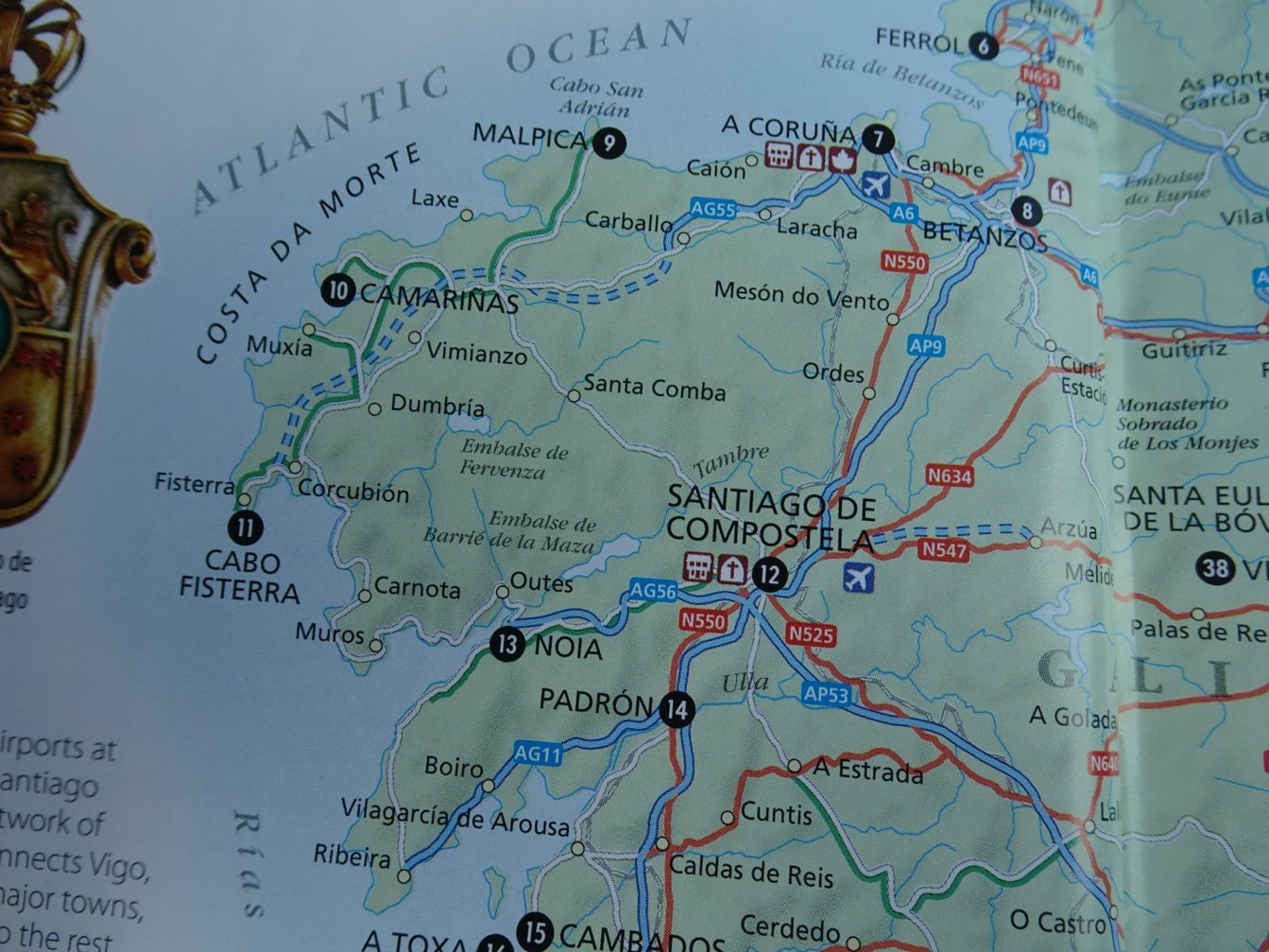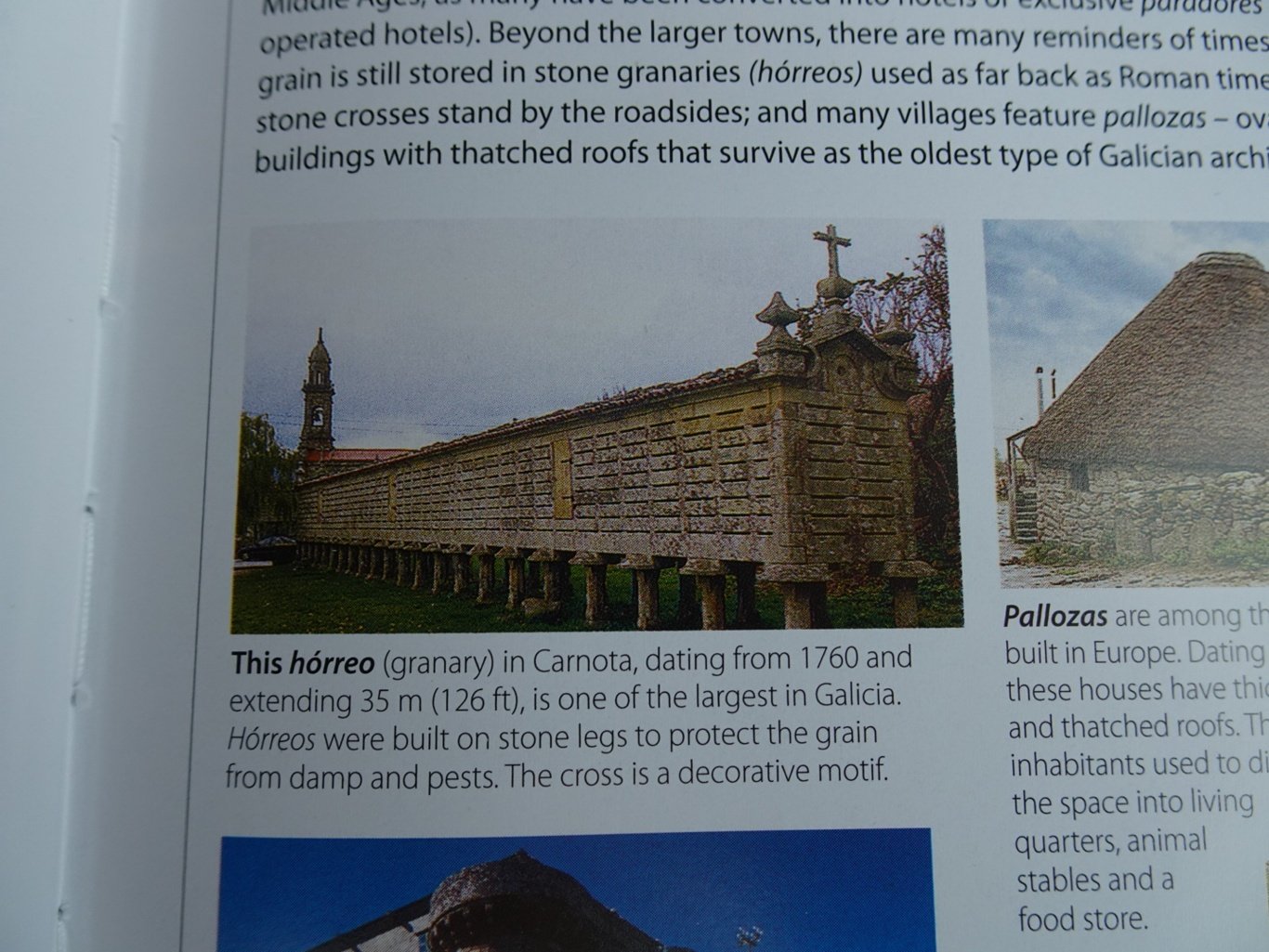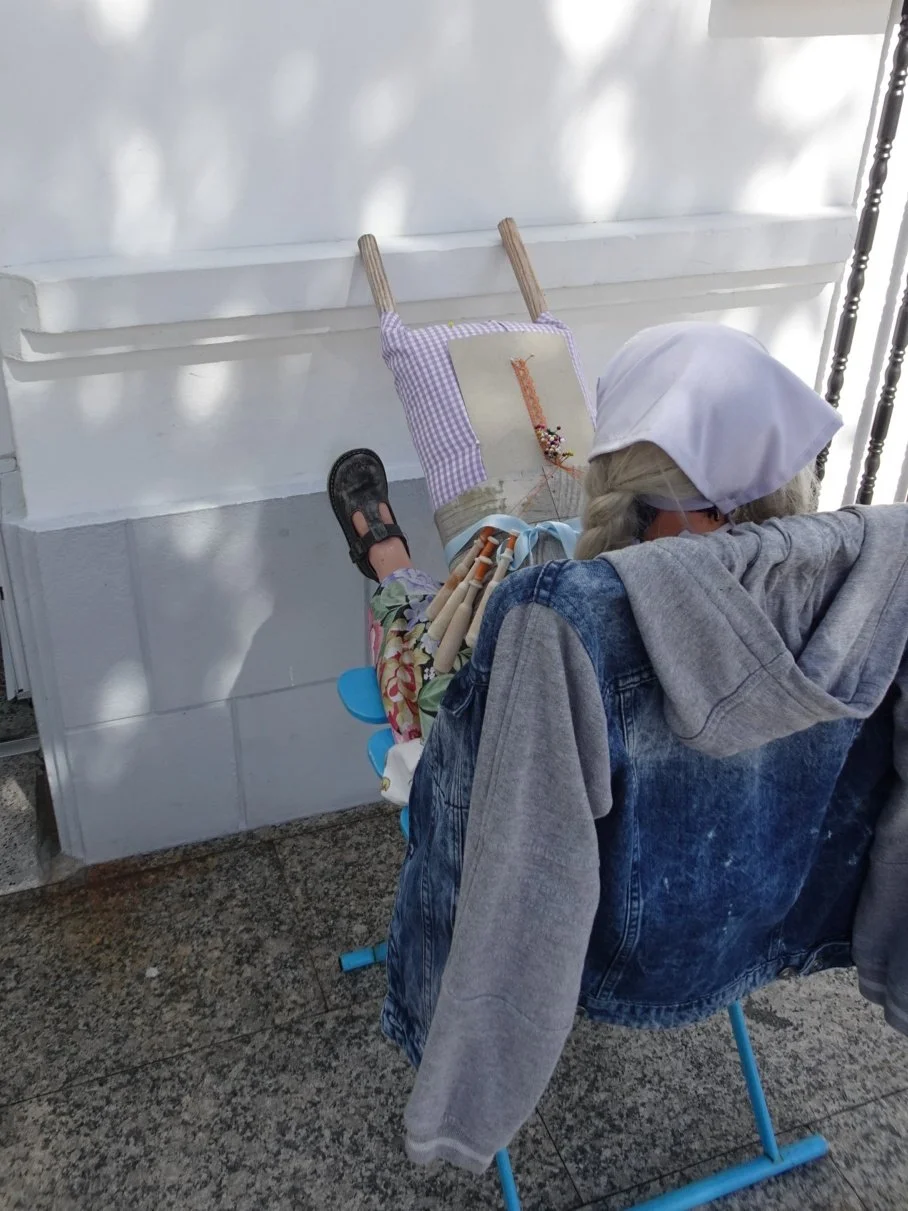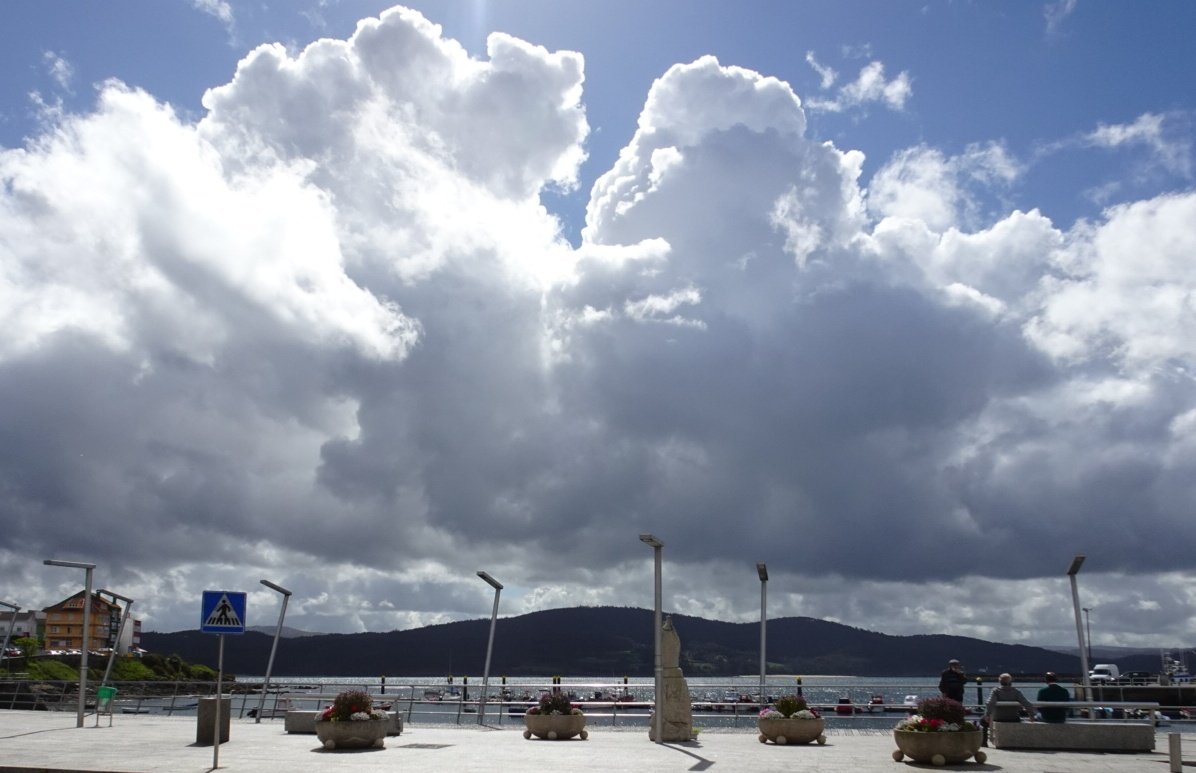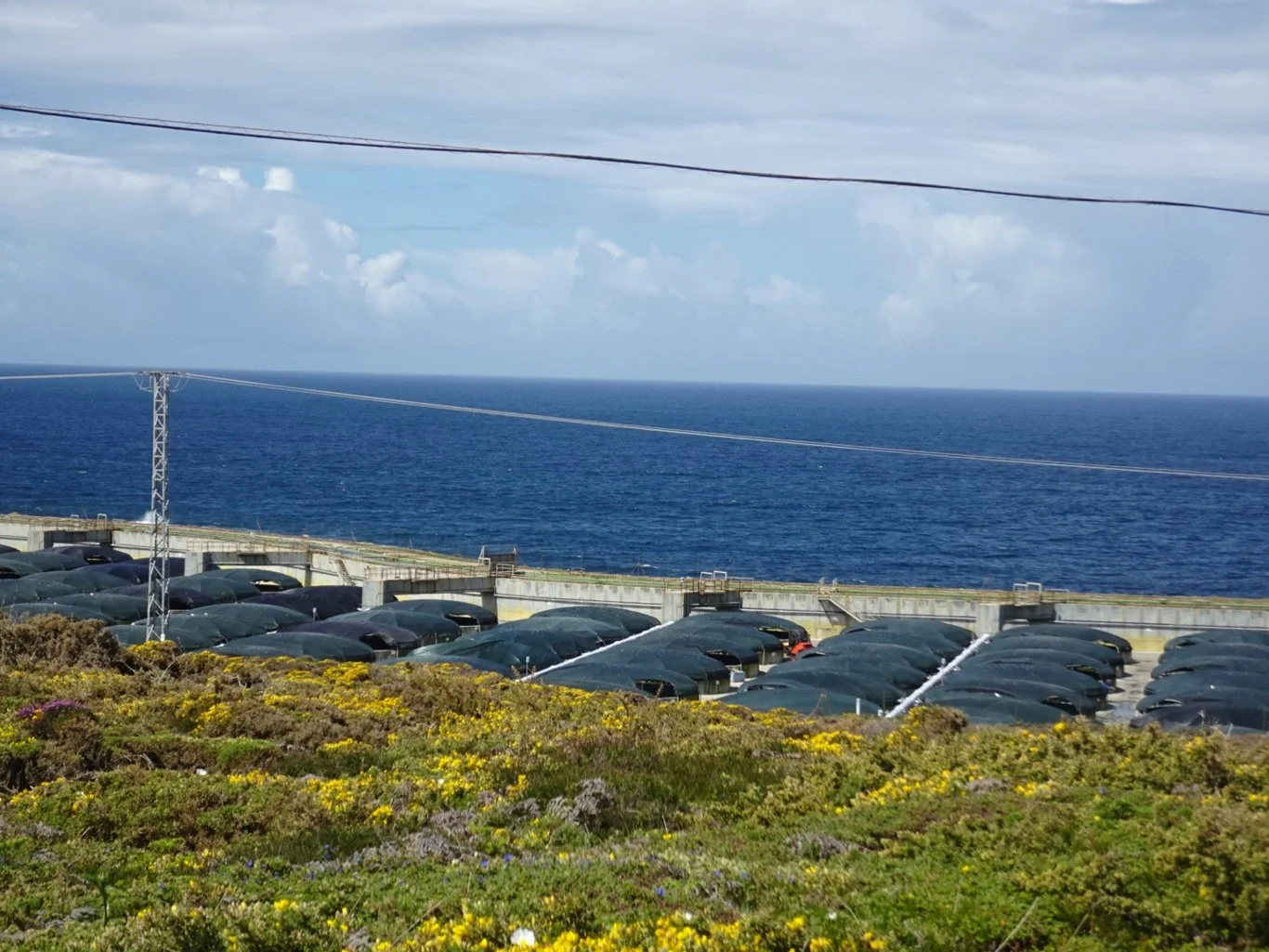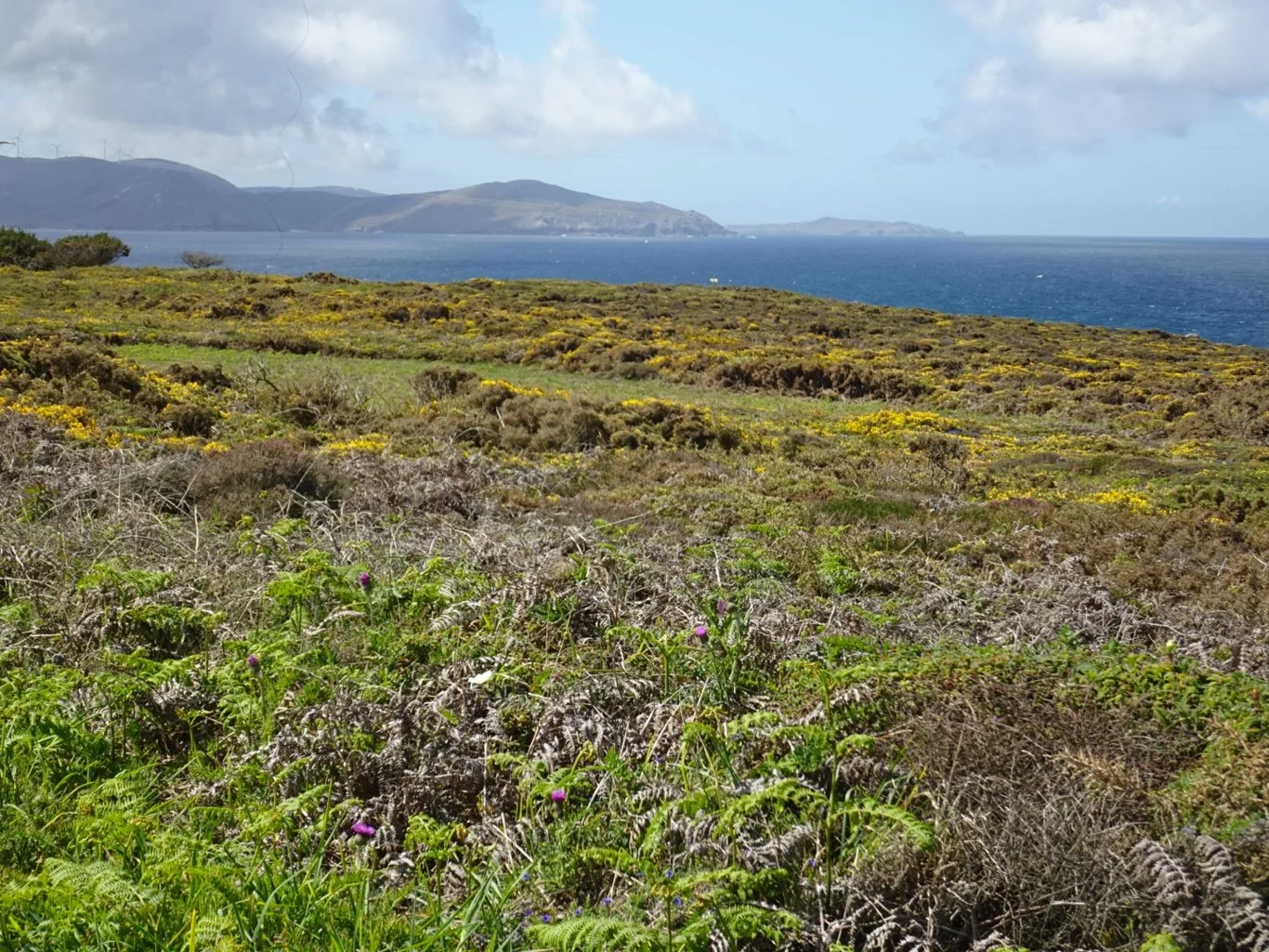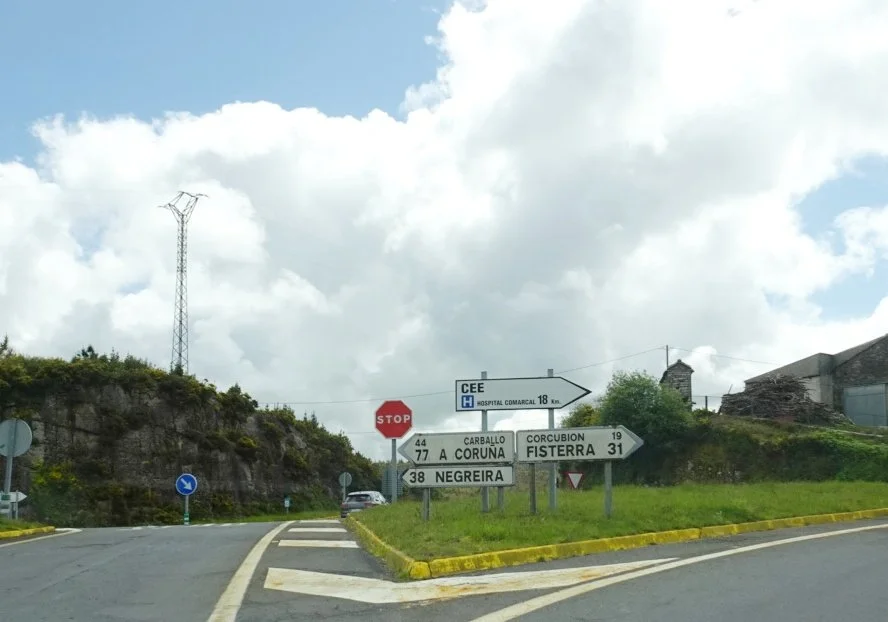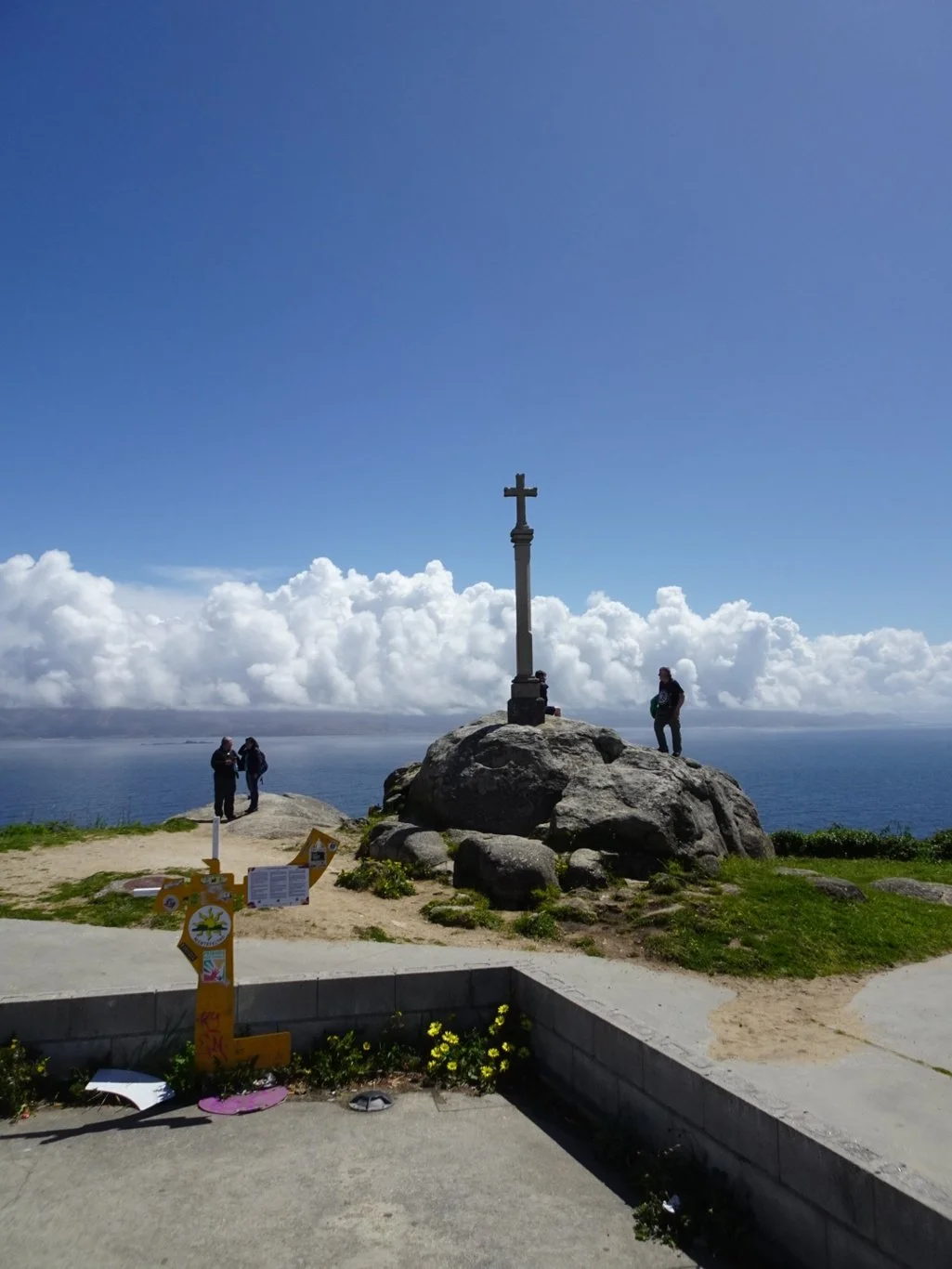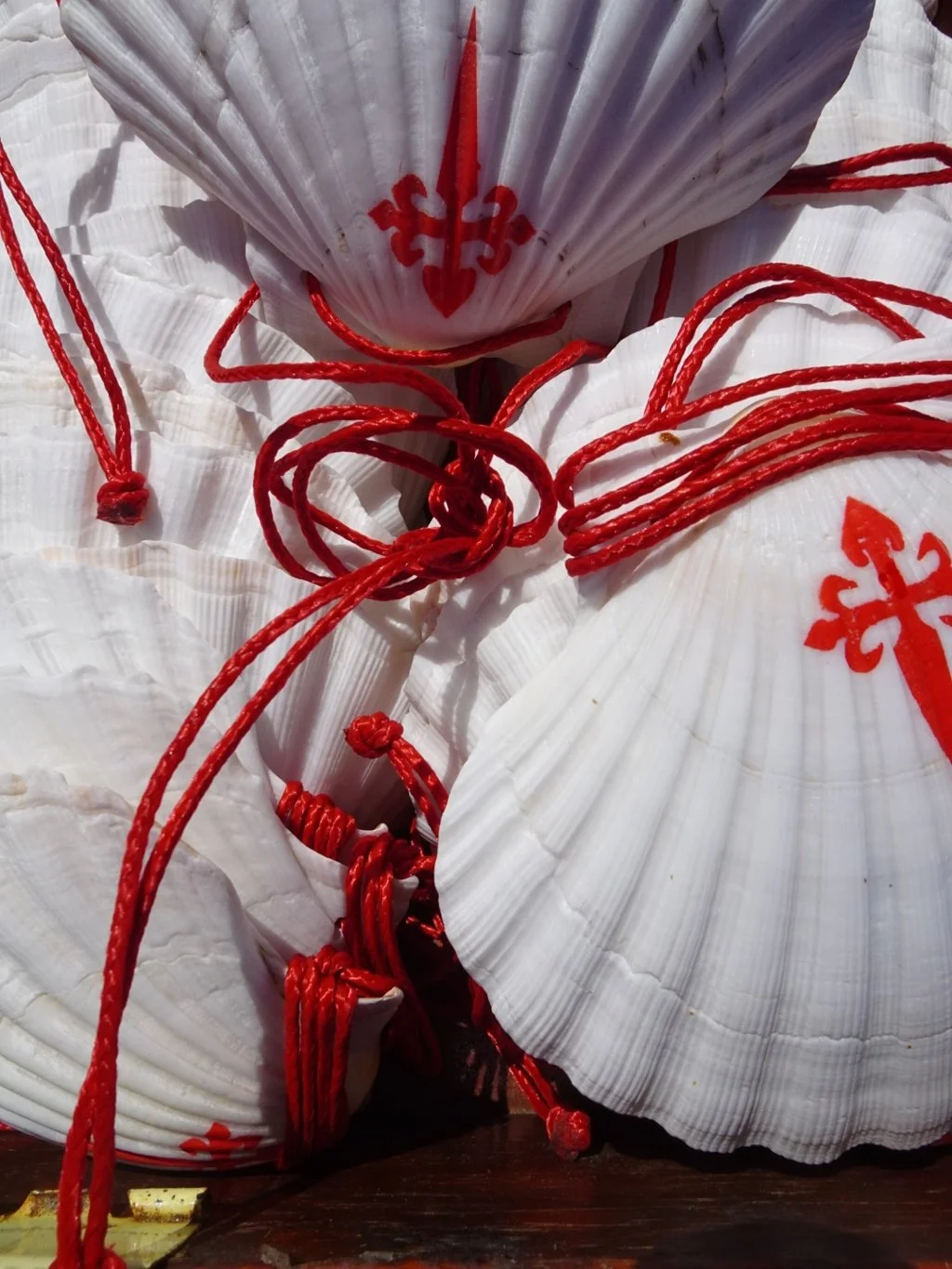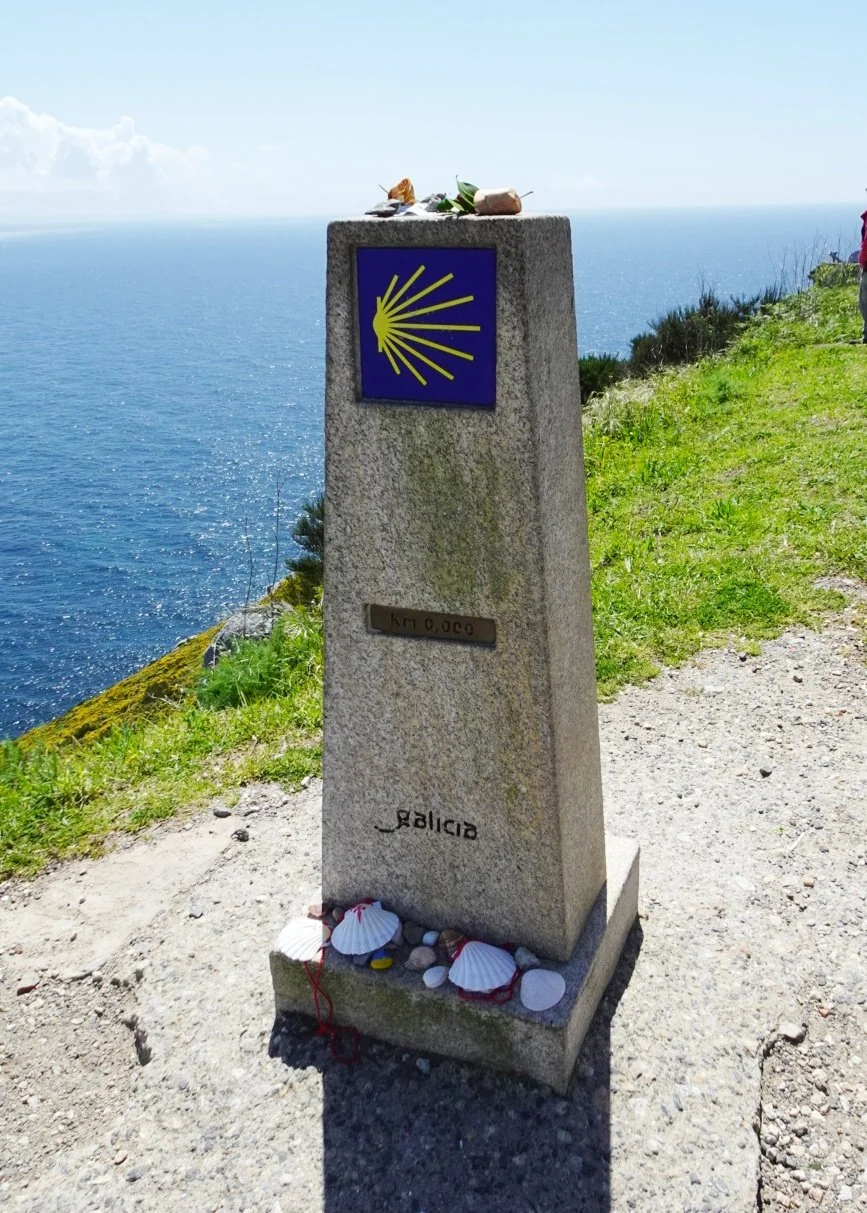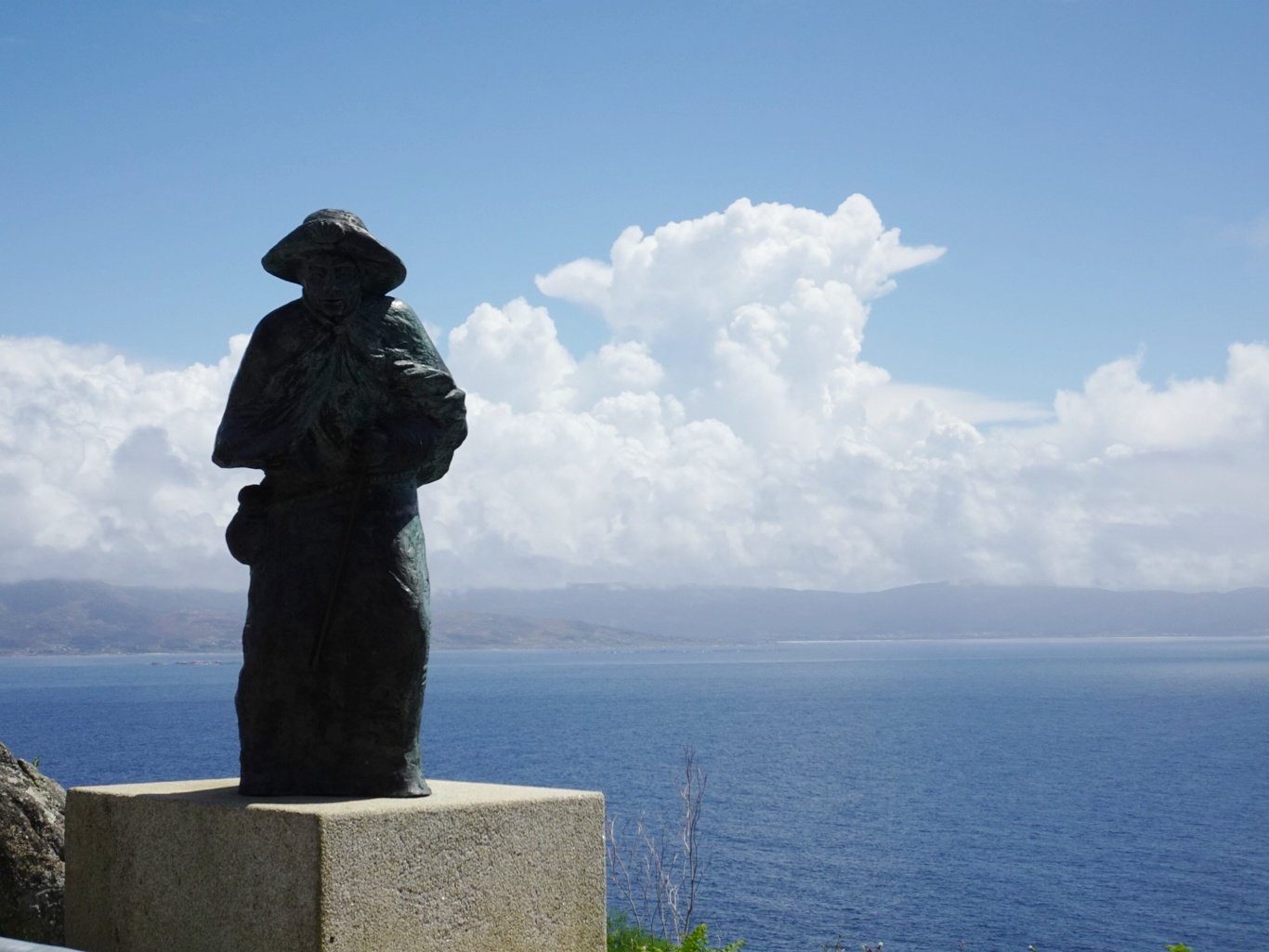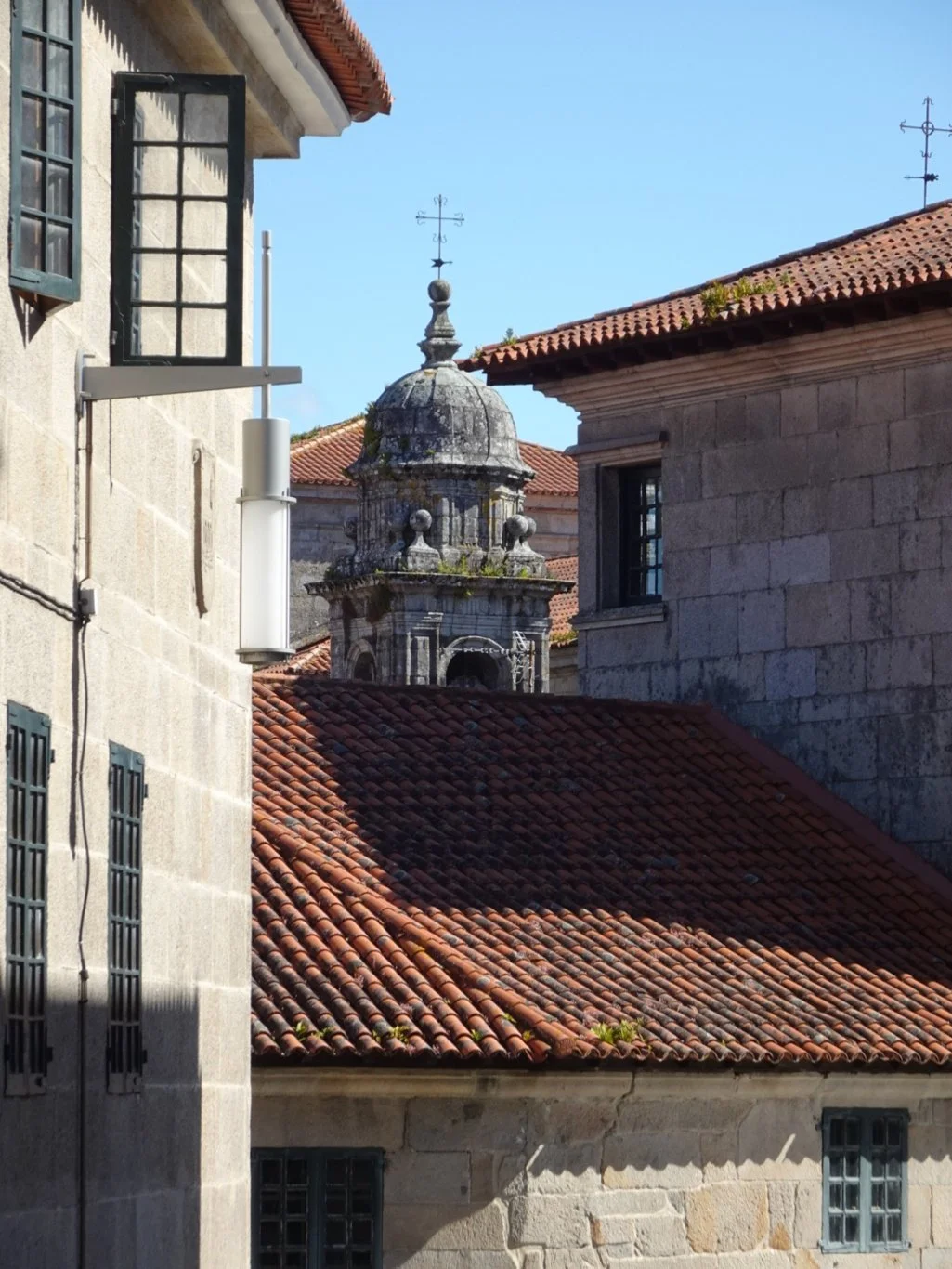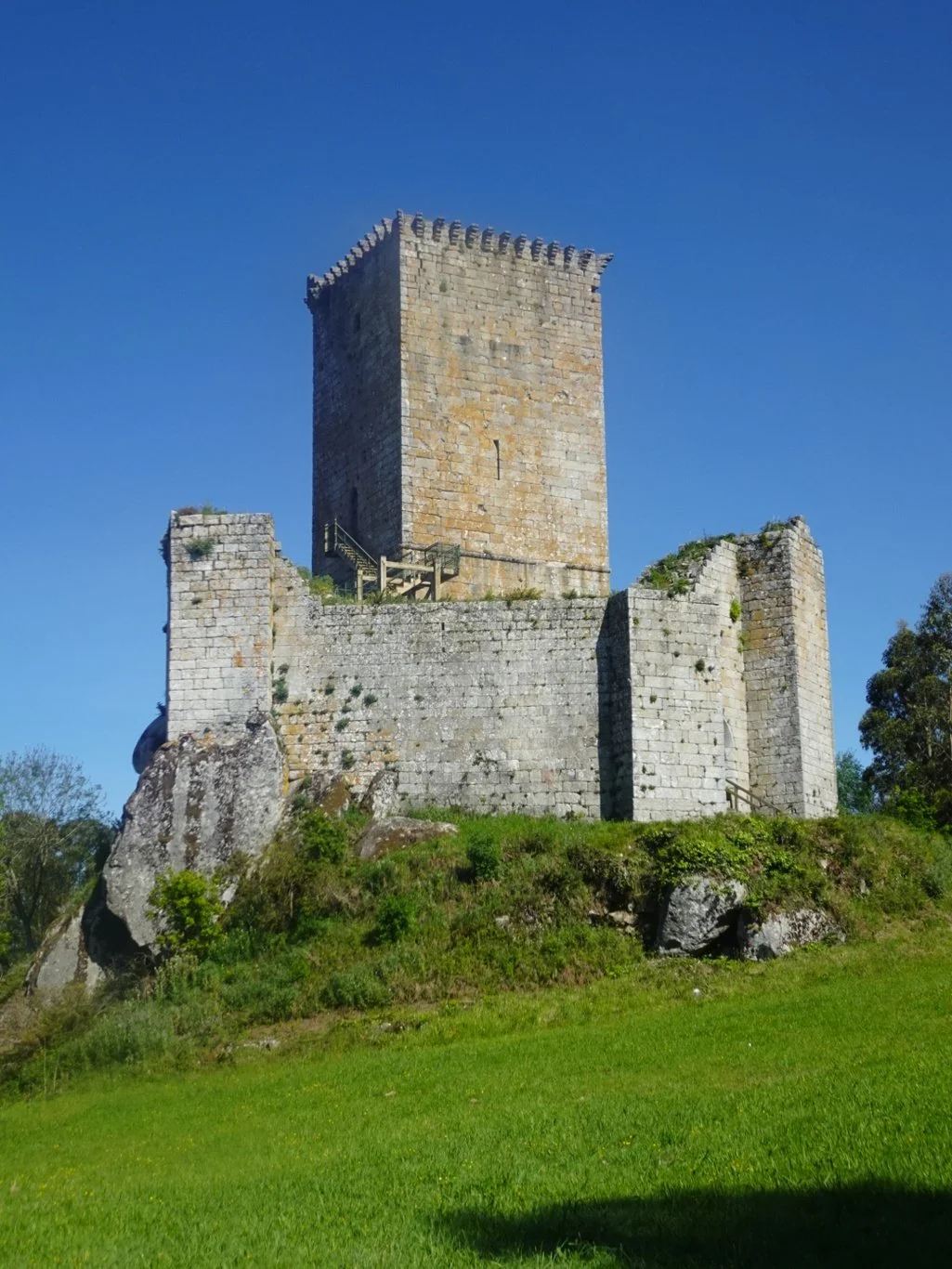To the end of the earth
Depending on your familiarity with the part of the world, you may well guess where we headed today! It was quite the adventure in some surprising ways.
We’ll admit to rather enjoying the reaction of people standing nearby when we jump in our car outside the Parador. This morning a group of mostly American visitors were standing around it and when it beeped as it unlocked, the chap nearest to it jumped to attention. An amusing conversation followed and off we went, eyeing those clouds overhead and putting in both umbrellas and raincoats, just in case.
We had brought our satnav from home and I promise to never again say to my Hero how easy it is to have a familiar interface and voice guiding us to where we want to go. Just as we were leaving the suburbs of Santiago, the thing beeped and turned itself off. The battery was dead.
Thankfully we were somewhere where we could simply pull over and stop to think. It appeared the cable was broken at the joint with the plug. Hmmm. Did we have another one with us? Maybe back at the hotel but not here. But hang on, isn’t there a satnav in the car?
Of course! In Spanish…(of course) We neither of us could make head nor tail of it, so I took out the handbook to find out if we could change the language. Ever since my car was mistakenly shipped in Italian, I’ve been rather aware of the difference a language can make!! It being a Volkswagen, needless to say, the handbook was auf Deutsch. That’s fine….I can do that.
Except that in a similar way to my car handbook having everything in the index under “U” for “using the…”, this one seemed to have everything in a similarly weird order and my search for “Sprache” resulted in pages of details about the voice control. Not what we needed.
Eventually, we fiddled about with the touchscreen interface enough to find “idioma” and from there, found “Ingles”.
Phew. We were soon back on our way.
Driving through the Galician countryside, the skies began to brighten and we hoped the day was going to turn out well. This is a beautiful part of the world and we were so glad to be here.
The roads were empty and the driving easy. As we passed through small communities, I was looking out and scribbling in my book. I kept seeing examples of a strange shaped building and wondered what it was.
All the time though, we were looking at the ever changing sky. Oh my word, that looked a little ominous there ahead!
I kept going on about these buildings though, trying to describe them to my Hero who couldn’t look because he was driving the car. Maybe I could get a snap of one of them to show him when we stopped? Well, after a few failed attempts I managed it. Less that a metre wide, these buildings were up on stilts, raised a couple of feet from the ground, had no windows and I hadn’t spotted doors till now. With pitched roofs and crossed or other insignia on each gable end, what could they be?
Eventually we came across one with no other traffic about, so we could slow down and have a good look. This seemed to be a modern version, too. We shared suggestions ranging from chicken houses to storage of some kind, hay loft maybe? But they were small!
Our discussion came to an abrupt end as we arrived in our first destination - Camariñas, capital of…well, encaixe? Can you guess from the picture on the board? Answer is here.
As we drove into the town, the satnav noted the body of water to our left was the Atlantic Ocean. Oh!
Finding a good spot to park the car by the pretty harbour, I got out our guidebook to see where we were on a map.
There we were, on the coast just to the north west of Santiago on the ominously named “Costa del Morte” But it was the adjacent page that caught my eye.
A page about Galician architecture had a bit about those buildings I’d been spotting on the way here this morning! They are granaries, or “Horreos” and are typical of this part of Spain. We learned something new!
We didn’t have to look very far for the “encaixe” either, for several shops along the harbour front had clear indications of their business outside.
We stepped inside one of them, looking around for a small sample and souvenir and noting the little model as we did!
As we enjoyed a drink and a bit of fresh air in a nearby cafe however, we looked to the heavens. Oh dear…was it coming our way? Our conversation continued about weather, more generally and I muttered something about Robert FitzRoy, because the sea area around here had been renamed in his honour. Unusually, my Hero didn’t know this and being in the unusual position of explaining something historical to him, I thought I had better check my facts. His story is remarkable. What a man - and how pleasing it was to learn of his life sitting here, talking about weather forecasts (thank you Robert) looking over the sea area that now bears his name.
Our next stop was the Cabo de Vilan, the site of Spain’s first electric lighthouse.
And now, a rather large fish farm just down there on the shore.
Those clouds had passed us over and the sky had cleared, making this the most beautiful place to be. There was no one else around, it was peaceful and the air fresh and clear. It didn’t take much imagination however, to understand how quickly a storm could develop and give cause for the name “Costa del Morte”. There are some treachrous rocks down there too - a good reason for the lighthouse!
Our plan for the afternoon included one more stop; another lighthouse. This one lent its name to the title of my blog post today. We know it as Finisterre, in Spanish it’s Fisterra and both mean the same; the end of the earth.
It’s a little further south along the coast and was quite a busy spot when we arrived. Though there was this marker here, the lighthouse was a little further on.
Past the gift shop where all sorts of Camino-related items were on sale.
Because, we learned, this is the true end of the Camino, where pilgrims would burn the clothes they had travelled in, ready for a new start in life. Thankfully no one was burning their clothes here today.
From there, it was a short walk to the lighthouse. We stood a while, enjoying the sunshine - how lucky were we?
It seems fitting to finish today’s post here at Cape Finisterre, with a photograph of a bronze figure of a pilgrim which stands beside the path here. We have had a spectacular day but I could not be more thankful right now to be driving back to our fabulous hotel in Santiago and not walking.









